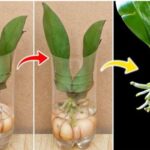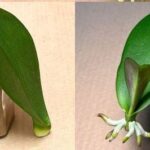Often considered a nuisance in manicured lawns, dandelions are a resilient and underrated plant with a remarkable secret hidden underground. While their bright yellow flowers and delicate feathery seeds are well known, the real treasure lies beneath the surface in the form of their roots. In this article, you’ll learn why dandelion roots are the most important part of this humble plant and why they deserve a place of honor in our gardens, kitchens, and herb closets.
The anatomy of the dandelion
Before delving into the importance of dandelion roots, it is important to understand the anatomy of the plant. Dandelion (Taraxacum officinale) is a perennial herb that belongs to the Asteraceae family. It consists of several parts, including the leaves, stems, flowers and roots. Each of these components plays a specific role in the plant’s life cycle and in its interaction with humans.
The leaves: The leaves of the dandelion contain many important nutrients such as vitamins A, C and K as well as minerals such as potassium and calcium. This nutritious green is often used in salads and herbal teas.
Stems: The stems of the dandelion contain a milky-white latex that is used in traditional medicine for its potential healing properties.
Flowers: Dandelion flowers are a source of nectar for pollinators and, in popular belief, a symbol of hope and resilience. They are also used to make dandelion wine and herbal teas.
The Roots: The roots of the dandelion are the unsung heroes of the plant. They are the key to various medicinal, culinary and practical uses.
The Medicinal Wonders of Dandelion Root
Liver Health: Dandelion roots have long been used in traditional medicine for their liver cleansing properties. They stimulate the production of bile and thus support digestion and detoxification. Its diuretic properties support the elimination of toxins from the body.
Help for digestion: Dandelion root tea can relieve stomach upset and relieve constipation. It promotes healthy digestion by improving the balance of beneficial gut bacteria.
Antioxidant powerhouse: Dandelion roots are rich in antioxidants such as beta-carotene and polyphenols, which fight free radicals, reduce the risk of chronic diseases and promote overall well-being.
Anti-inflammatory effects: The roots contain compounds with anti-inflammatory properties that can help relieve the symptoms of inflammatory diseases such as arthritis.
Cancer prevention: Some studies suggest that dandelion root extract has potential anti-cancer properties and inhibits the growth of cancer cells.
Culinary Uses of Dandelion Roots
In addition to their medicinal properties, dandelion roots are also a versatile culinary ingredient. Here are some ways they can be used in your kitchen:
Roasted dandelion root as coffee: Roasted dandelion roots can be ground and brewed into a coffee-like drink that is caffeine-free and rich in flavor.
Dandelion root chips: Thinly sliced dandelion roots can be roasted or too Crispy chips are fried and offer a nutritious alternative to traditional potato chips.
Dandelion root soup: Dandelion roots can be used as a flavorful addition to soups and stews, giving them a subtle earthy flavor.< a i=3>Dandelion root salad: Cooked or blanched dandelion roots make an excellent addition to a salad and give it a unique texture and taste.Conclusion
While dandelions are often dismissed as weeds, their roots tell a different story. These inconspicuous underground structures are a source of numerous health benefits, a versatile culinary ingredient, and even a potential cure for various ailments. When we reconsider our relationship with these tenacious plants, it becomes clear that the roots of the dandelion are actually the most important part of the plant, offering us a world of possibilities for better well-being and culinary enjoyment. So next time you come across dandelions in your garden, remember to appreciate the hidden treasure beneath the surface.


